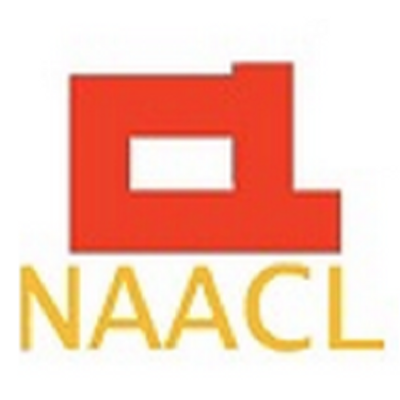naacl 1989 论文列表
Speech and Natural Language: Proceedings of a Workshop Held at Cape Cod, Massachusetts, USA, HLT 1989, October 15-18, 1989.
|
White Paper on Natural Language Processing.
White Paper on Spoken Language Systems.
Analysis and Symbolic Processing of Unrestricted Speech.
TACITUS: A Message Understanding System.
Real-Time Speech Recognition Systems.
Integration of Speech and Natural Language Understanding for Spoken Language Systems (SLS).
Preprocessors for Noisy Speech.
Natural Language, Knowledge Representation and Discourse.
Pilot Project on Speech Recognition using Layered Abduction and Multiple Knowledge Types.
Robust Natural Language Analysis.
Establishing Performance Baselines for Text Understanding Systems.
Robust Speech Recognition Technology Program Summary.
Research and Development for Spoken Language Systems.
The Current Status of the Penman Language Generation System.
Speech Research at Carnegie Mellon.
A Microphone Array System for Speech Recognition.
Segment-Based Acoustic Models with Multi-level Search Algorithms for Continuous Speech Recognition.
Evaluating the Use of Prosodic Information in Speech Recognition and Understanding.
Generalized Consultation Systems and Knowledge Acquisition.
Spoken Language Systems.
Research in Continuous Speech Recognition.
Research and Development in Natural Language Understanding.
Summary of Session on Hardware for Spoken Language Demonstrations.
Coordinating Text and Graphics in Explanation Generation.
Natural Language with Integrated Deictic and Graphic Gestures.
An Evaluation of Lexicalization in Parsing.
Using Structural Constraints for Speech Act Interpretation.
Session 11 Natural Language III.
Contextually-Based Data-Derived Pronunciation Networks for Automatic Speech Recognition.
Speech Recognition in Parallel.
Some Applications of Tree-based Modelling to Speech and Language.
Improvements in the Stochastic Segment Model for Phoneme Recognition.
The Auditory Processing and Recognition of Speech.
Spectral Estimation for Noise Robust Speech Recognition.
ACOUSTICAL PRE-PROCESSING FOR ROBUST SPEECH RECOGNITION.
SUMMARY OF SESSION 10 - Continous Speech Recognition II.
SUMMARY OF SESSION 9 - FUTURE PLANS.
Tied Mixtures in the Lincoln Robust CSR.
Continuous Speech Recognition from Phonetic Transcription.
Acoustic Modeling of Subword Units for Large Vocabulary Speaker Independent Speech Recognition.
Large-Vocabulary Speaker-Independent Continuous Speech Recognition with Semi.Continuous Hidden Markov Models.
Towards speech Recognition without Vocabulary-Specific Training.
Automatic New Word Acquisition: Spelling from Acoustics.
Automatic Detection Of New Words In A Large Vocabulary Continuous Speech Recognition System.
Speaker Adaptation Using Multiple Reference Speakers.
Improved HMM Models for High Performance Speech Recognition.
Overview: Continuous Speech Recognition I.
Porting tonNew Domains Using the Learner.
Belief Ascription and Model Generative Reasoning: joining two paradigms to a robust parser of messages.
Summary of Session 7 - Natural Language (Part 2).
A CSR-NL Interface Specification Version 1.51.
The N-Best Algorithm: Efficient Procedure for Finding Top N Sentence Hypotheses.
A Stack Decoder for Continous Speech Recognition.
Spoken Language Systems II.
Text on Tap: the ACL/DCI.
Data Collection and Evaluation II.
Preliminary Evaluation of the Voyager Spoken Language System.
Evaluating spoken language interaction.
A Simple Statistical Class Grammar for Measuring Speech Recognition Performance.
A Proposal for SLS Evaluation.
The Collection and Preliminary Analysis of a Spontaneous Speech Database.
Data Collection and Analysis in the Air Travel Planning Domain.
Data Collection And Evaluation.
New Possibilities in Machine Translation.
Augmenting a Hidden Markov Model for Phrase-Dependent Word Tagging.
Enhanced Good-Turing and Cat.Cal: Two New Methods for Estimating Probabilities of English Bigrams (abbreviated version).
Parsing, Word Associations and Typical Predicate-Argument Relations.
Preference Semantics for Message Understanding.
Natural Language I.
Answers and Questions: Processing Messages and Queries.
The Voyager Speech Understanding System: A Progress Report.
Modelling Non-verbal Sounds for Speech Recognition.
Unification-Based Semantic Interpretation in the BBN Spoken Language System.
Summary of Session 2: Spoken Language Systems I.
Distinguishing Questions by Contour Speech Recognition Tasks.
Timing Models for Prosody and Cross-Word Coarticulation in Connected Speech.
Prosody and Parsing.
Report on Session I: Prosodic Aids to Speech Recognition.


